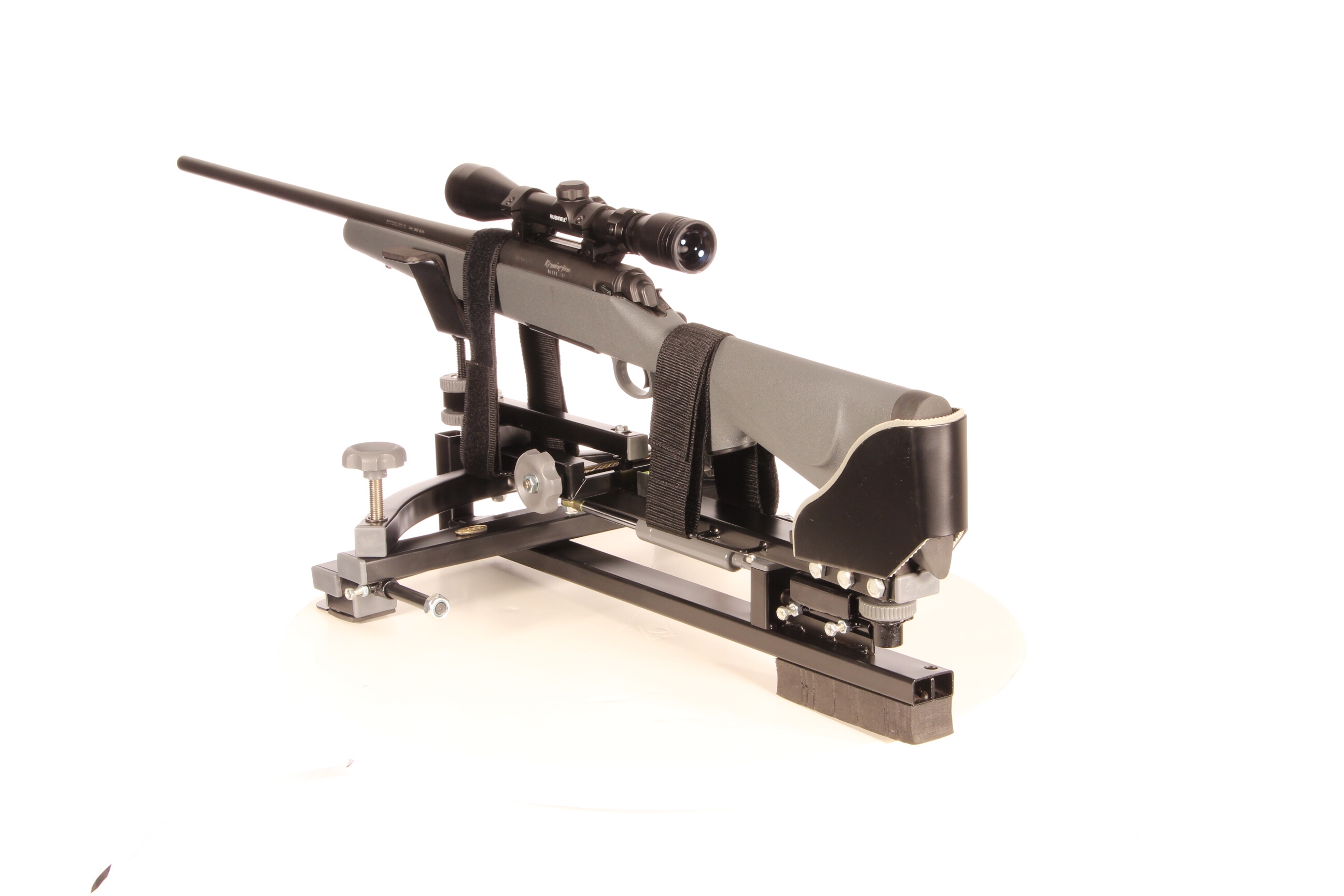Things that you need to know about The Hyskore® 30088 DLX Precision Rifle Rest
Things that you need to know about The Hyskore® 30088 DLX Precision Rifle Rest
Consistency and repeatability for the Hyskore www.hyskore.com 30088 DLX Shooting Rest https://hyskore.com/products/30088-dlx-precision-rest/ require a stable bench that’s not going to move, and having the rest adequately anchored to the bench top. Put one screw through the bench grip, and one screw to each of the two tabs in the front, and if you’re still not getting the consistency and repeatability you think you should be getting, drill a hole through the rear of the rest and anchor with another screw. It’s easiest to drill the additional hole through the foam in the bottom first, and then through the steel tubing. Keep in mind there’s a support in the middle of the steel tube and therefore your hole needs to be off to one side or the other.
The two knobs that hold the V notch in place tend to loosen up under use. Check them frequently because if they’re loose they’re going to open up the group, and you’re going to lose consistency. Get one or two lock washers put them underneath and then secure. The rest is supplied with a foam v block for use with guns that have wide forends. For guns with narrow standard size forends, do not use the V block as will allow too much side play.
To test to see if the recoil resistance of the rest is compatible with your gun, put a little grease on the shaft end of the damper. Now fire your gun and see where the grease residue ends. As long as it doesn’t go all the way to the barrel of the damper you’re good to go. In order to fit properly in the mounting studs and the eyes of the damper must be parallel and properly aligned. If they’re not, grasp each end with the plier and insert a screwdriver and gently twist the ends to realign.
If you feel a need for recoil resistance somewhere in between the damper and no damper, spring packs can be purchased directly from Hyskore. To use the springs simply remove the lock nuts on the shaft, insert the spring, and tighten the lock nut. The spring pack comes with a selection of six springs, providing from two to eight pounds of progressive resistance per inch of travel. With the damper removed and either the blue or the yellow springs installed, the rest should move and returned to battery. Now with the damper removed, and the two blue springs installed, this is the way a .223 will run. To install the springs, back off the lock nut, put the spring over the shaft, and tighten the lock nut. If you want to order the spring pack, it’s Hyskore Part Number 30028. Before you shoot a heavier gun don’t forget to replace the compression damper.
Make sure the shaft end is facing forward, put the rear of the damper over the rear mounting stud, if there’s not enough clearance, elevate the fine elevation in the rear. Then you’ll be able to lift the upper carriage so you have enough clearance, put the front of the damper over the front stud, and tighten the fasteners in place. In order to eliminate any mechanical movement in the mechanism of the rest, there are adjustments at three points on the sides and at the rear of the rest. These adjustments will remove any excess side play. To make the adjustment to remove play, first thread a nut onto the bolt, thread it into the fitting on the sleeve till it bottoms, back off a quarter of a turn, then use a wrench to tighten the nut.
If the rest binds, run slow, or fails to make a full return to battery, the most probable cause is dirt or contamination buildup, or even excess finish that’s been applied at the factory on the guide rods that the upper carrier rides on. To solve the problem clean them off with solvent. Take some plumbers emery, polish them up, then use some acid free machine oil to lubricate.
Now that you’ve anchored your rest to a solid bench, and you removed any opportunity for mechanical play within the rest, if you’re still not seeing the type of consistency and grouping you think you should be getting, you probably need to look someplace else. The first place to look is your scope. If you’re shooting with the Schmidt and Bender or Leupold, the scope is probably not the cause of your problem. If you’re shooting with an inexpensive $20.00 import scope, there’s a high probability that’s where the problem lies. The reticle could shift or freeze and this will throw the group all over the place. In addition, you need to look at your mounts. Good mounts will not bind on the scope and will hold it straight and true after every shot. Inexpensive mounts can easily shift and loosen up and cause problems binding the scope, and this also will throw your groups all over. The other thing you have to look at is twist rate. This is frequently overlooked when examining accuracy and consistency. The twist rate of the barrel must be consistent with the weight, and therefore length of the bullet. Longer bullets require faster twist rates, slower bullets can work well with slower twist rates. For example, Remington currently loads 30-06 and weights from 125 grains to 220 grains. Needless to say using a bullet with the same diameter and made from the same material, the heavier bullet is longer, and therefore requires a faster twist rate to properly stabilize.
.225 / 5.56 millimeter is another good example of a popular caliber where twist rate is critical. Using bullet weights below 60 grains 1 in 10 or 1 in 11 a twist rate is sufficient to stabilize. Using bullets 60 grains and heavier with twist rate of 1 in 8 or 1 in 9.
If we want to shoot a rim fire or a light recoiling gun, remove the damper, and then fire your gun in the rest. However, after each shot, you will need to manually push the upper carrier of the rest forward to return the gun to battery. To use the rest with a spring type air gun which recoils coils forward rather than back, remove the damper, pull the upper carrier to the rearward position before it’s shot and then return it to the rear with position after each shot. In order to eliminate binding and maintain proper function, it’s a good idea to lubricate the screw threads on the rest. Acid free machine oil, such as the singer sewing machine oil, works extremely well. Without the bench grip arm in place the rest measures twenty three and a half inches long by 16 inches wide.


No Comment